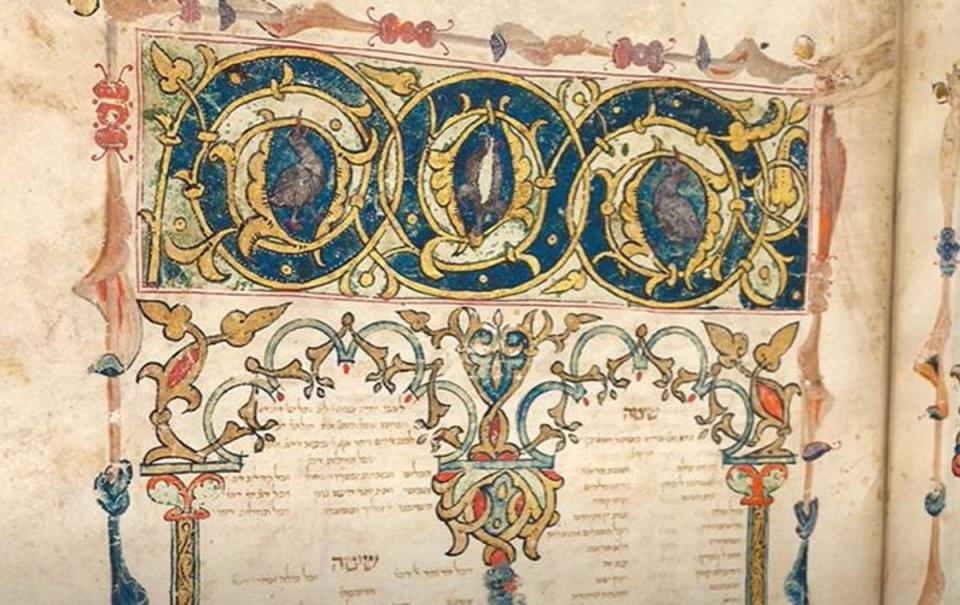A rare 14th-century ornate Hebrew Bible written during the golden age of Spain will be put on public display after being sold for $6.9m (£5.3m).
The Bible, written by Rabbi Shem Tov Ibn Gaon in 1312AD in Soria, Castil, blends Jewish, Christian and Islamic artistic traditions, auction house Sotheby’s said.
The Shem Tov Bible, described by Sotheby’s as “a tour de force of biblical and kabbalistic scholarship and a precious witness to the mediaeval tradition of Sephardic book art”, was sold on Tuesday evening in New York.
The Bible with its gilded and colourful pages offers a direct link to a Hebrew text known as the Codex Hilleli, a now-lost manuscript believed to have been written circa 600AD. The manuscript was widely revered as the “most accurate transmission of the text of the Hebrew bible in circulation”, according to the auction house.
The sale marks the Bible’s first appearance at an auction since 1984, when it reportedly fetched a record price for a Hebrew manuscript at the time.


The Bible was previously owned by collector David Sassoon, who bought it in 1909 from a leading Jewish family called Seror in Tripoli, Libya.
“It is one of the important manuscripts of the Hebrew scriptures that have survived from mediaeval Spain,” said Sharon Liberman Mintz, Sotheby’s international senior Judaica specialist, books and manuscripts. “It was richly illuminated throughout, researched and extensively annotated.”
“It’s rare to have illuminated Hebrew Bibles come to the market” as so few are in private hands, she said.
The Bible also contains about 2,000 marked “anomalous” letters, which are imbued with a special, secret meaning, in accordance with the traditions of Jewish mysticism, known as Kabbalah.
“The Shem Tov Bible also includes Kabbalistic symbolism, evident in the inclusion of a mediaeval text called the Sefer Tagei, which specifies how Jewish scribes were to write the holy letters of the bible in Hebrew,” Ms Mintz told Penta Magazine.
“There are drawings of arches that resemble those of the Alhambra, the Moorish palace in Granada, Spain, and others that appear Gothic.”
Last year, a 1,100-year-old Hebrew Bible, considered to be one of the oldest surviving biblical manuscripts, sold for $38m (£28.9m) in New York.
The manuscript was exhibited at the ANU Museum in Israel in March as part of a worldwide tour before the auction.
